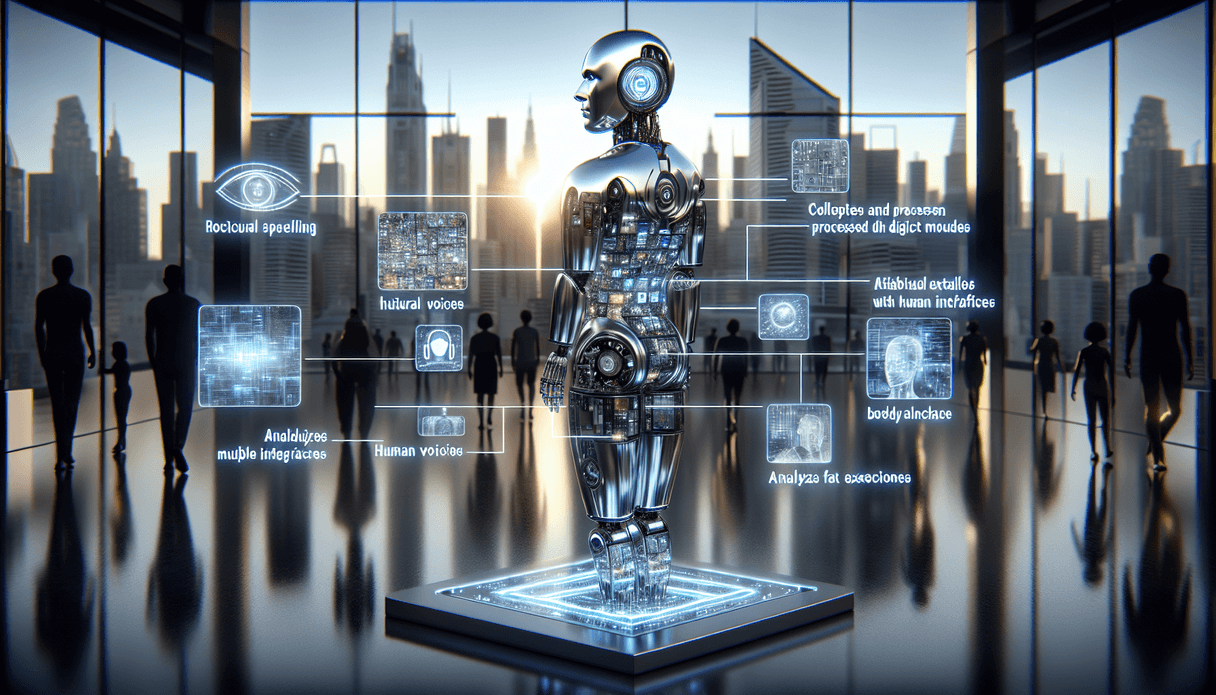The landscape of artificial intelligence is evolving at a breakneck pace, and OpenAI's latest innovation, GPT-4o, is a testament to this rapid advancement. Announced on May 13, 2024, GPT-4o represents a significant leap forward in the realm of multimodal AI, seamlessly integrating text, audio, and visual inputs and outputs. This new flagship model is designed to facilitate more natural and intuitive human-computer interactions, setting a new benchmark for AI capabilities.
A New Era of Multimodal AI
GPT-4o, where the "o" stands for "omni," is engineered to handle a diverse range of inputs and outputs, including text, audio, images, and video. This multimodal capability allows GPT-4o to process and generate responses in real-time, making it a versatile tool for various applications. One of the standout features of GPT-4o is its ability to respond to audio inputs in as little as 232 milliseconds, with an average response time of 320 milliseconds. This speed is comparable to human response times in conversations, making interactions with GPT-4o feel more natural and fluid.
Enhanced Performance and Cost Efficiency
In terms of performance, GPT-4o matches the capabilities of GPT-4 Turbo for text in English and coding tasks. However, it significantly outperforms its predecessors in understanding and generating text in non-English languages. Additionally, GPT-4o is faster and 50% cheaper to use via the API, making it a more accessible option for developers and businesses.
Superior Vision and Audio Understanding
One of the most notable improvements in GPT-4o is its enhanced ability to understand and process visual and audio data. This model has been trained end-to-end across text, vision, and audio, allowing it to maintain context and nuance that previous models, which relied on separate pipelines for different modalities, could not. This holistic approach means GPT-4o can directly observe tone, multiple speakers, and background noises, and it can output more expressive responses, including laughter and singing.
Real-World Applications
The potential applications of GPT-4o are vast and varied. Here are a few examples of how this model can be utilized:
- Customer Service: GPT-4o can handle customer inquiries through text, voice, and even video calls, providing more personalized and efficient service.
- Real-Time Translation: With its advanced audio and text processing capabilities, GPT-4o can offer real-time translation services, breaking down language barriers in global communication.
- Creative Projects: From generating visual narratives and character designs to creating poetic typography and 3D object synthesis, GPT-4o can be a valuable tool for artists and designers.
- Educational Tools: GPT-4o can assist in creating interactive learning experiences, such as lecture summarizations and meeting notes with multiple speakers, enhancing the educational process.
Model Evaluations and Benchmarks
GPT-4o has been rigorously evaluated across various benchmarks to ensure its performance and reliability. It achieves GPT-4 Turbo-level performance on text, reasoning, and coding intelligence while setting new high watermarks in multilingual, audio, and vision capabilities. For instance, GPT-4o dramatically improves speech recognition performance over Whisper-v3 across all languages, particularly for lower-resourced languages. It also sets a new state-of-the-art in speech translation and outperforms Whisper-v3 on the MLS benchmark.
Language Tokenization
GPT-4o introduces a new tokenizer that significantly reduces the number of tokens required for various languages, enhancing efficiency and performance. For example, Gujarati sees a reduction from 145 to 33 tokens, Telugu from 159 to 45, and Tamil from 116 to 35. This improved tokenization not only speeds up processing but also reduces costs, making GPT-4o a more viable option for multilingual applications.
Safety and Limitations
Safety is a paramount concern in the development of GPT-4o. The model has built-in safety features across all modalities, including filtering training data and refining behavior through post-training. OpenAI has also implemented new safety systems to provide guardrails on voice outputs. GPT-4o has undergone extensive external red teaming with over 70 experts in fields such as social psychology, bias and fairness, and misinformation to identify and mitigate potential risks.
Despite these precautions, GPT-4o is not without its limitations. OpenAI continues to explore and address these limitations, seeking feedback from users to identify areas where GPT-4 Turbo may still outperform GPT-4o. This iterative approach ensures continuous improvement and adaptation to new challenges.
Availability and Future Developments
GPT-4o is being rolled out iteratively, with text and image capabilities available in ChatGPT starting today. The model is accessible in the free tier and to Plus users with up to 5x higher message limits. A new version of Voice Mode with GPT-4o is expected to launch in alpha within ChatGPT Plus in the coming weeks. Developers can also access GPT-4o in the API as a text and vision model, with plans to introduce its audio and video capabilities to a select group of trusted partners soon.
Conclusion
GPT-4o marks a significant milestone in the evolution of AI, bringing us closer to more natural and intuitive human-computer interactions. Its multimodal capabilities, enhanced performance, and cost efficiency make it a powerful tool for a wide range of applications. As OpenAI continues to refine and expand GPT-4o's capabilities, we can expect even more groundbreaking advancements in the field of artificial intelligence.
For those interested in exploring GPT-4o's capabilities, you can try it out on ChatGPT or in the Playground. Stay tuned for further updates and developments as OpenAI continues to push the boundaries of what's possible with AI.

